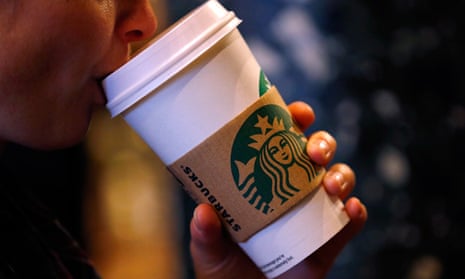Last year, the Williamsburg neighborhood of Brooklyn got its first two Starbucks – the first in July, and the second four months later. While across the river in Manhattan no one would blink an eye at yet another Starbucks popping up, in trendy Williamsburg the reactions were mixed. Some residents were miffed – who needs Starbucks when they have a dozen boutique coffee shops around the corner? Others were thrilled, hoping it was a sign of things to come.
One of those things: higher real estate prices.
“Now, when I am showing properties in the area, I do point out that Starbucks and I always get a really positive reaction,” says Kristin Thomas, a real estate broker with Compass who works in both Manhattan and Williamsburg. “I think there is something reassuring to buyers, especially to buyers who are deciding to come out to Williamsburg from Manhattan, when a few years ago they might not have.”
It’s a caffeinated spin on the old chicken-and-egg question: which came first: Starbucks or higher real estate prices?
Starbucks, say Zillow chief executive Spencer Rascoff and chief economist Stan Humphries, authors of Zillow Talk: The New Rules of Real Estate. They write that Starbucks fuels gentrification and so is responsible for higher housing prices. Overlaying a map of Starbucks locations with Zillow’s database of 110m homes, the two found that over the span of 17 years US homes appreciated 65% on average, going from $102,000 in 1997 to $168,000 in 2014. Houses near Starbucks, on the other hand, appreciated 96%, according to their calculations – rising from an average of $137,000 in 1997 to now as much as $269,000.
“Whatever the reason – because they genuinely like drinking coffee, or because they see Starbucks as a proxy for gentrification – it seems pretty clear that people are paying a premium for homes near Starbucks,” the two authors conclude in an excerpt of their book, published in Quartz. “And furthermore, it looks like Starbucks is driving the increase in home values.”
While the authors believe Starbucks drives up the price of real estate, others says the chain coffee shops are just easily found in urban areas where real estate prices would have gone up anyway.
“Rather than real estate values being driven up by Starbucks, it’s the other way around,” says Thomas. “Starbucks has strategically selected locations based on prime areas which also come with higher real estate prices.”
Basically, Starbucks is a savvy real estate buyer, but it isn’t the only one. Let’s go back to Williamsburg: there is now a J Crew, and a Whole Foods and Apple store are in the works – all signs of a gentrifying area, says Thomas.
“Psychologically, we all kind of associate Starbucks with gentrification and when Starbucks finally came to Williamsburg, I said: ‘Wow. Williamsburg has finally arrived,’” says Thomas. “It definitely reflects the high-end condominiums and the residents of the high-end condominiums that have overtaken Williamsburg.”
Cities, cities, cities
Starbucks is still a mostly urban American phenomenon. Walk around most major cities and every few blocks you are likely to spot one. Take New York, for example: according to the Wall Street Journal, there are about nine Starbucks for every square mile of Manhattan.
When Chris Meller mapped all of the Starbucks location in the US last year, he found that many of the coffee shops were based in US cities. They were also more densely located in wealthier neighborhoods. In Manhattan, which according to Meller’s calculations had 210 Starbucks at the time, 91 were in midtown between 42nd and 59th streets. Other New York City boroughs such as Brooklyn and the Bronx, which tend to be poorer than Manhattan, have a lower number of Starbucks locations.
But real estate prices in Williamsburg have been on the rise for years, while area only got its first Starbucks barely six months ago. Its existence has seemingly little to do with prices so far.
What about where Starbucks isn’t?
When Rascoff and Humphries visited Starbucks headquarters, they were told that the selection of where the new stores will open is “as much an art as a science”.
Neither art or science helped Starbucks in 2008, when the company closed about 600 locations – most of which were in poorer areas and had been open for fewer than three years. Among those closed was one of the three Starbucks in Newark, New Jersey. When it first opened, the coffee shop was a sign of the city’s resurgence according to the New York Times. Yet eight years after it opened, it was losing money and its doors were closed.
Yes, the green mermaid is as much branding for coffee as it is for gentrification. Yet coffee shops can only do so much. That venti latte might mark a neighborhood as up-and-coming, but sadly it isn’t single-handedly dragging that area out of poverty.

Comments (…)
Sign in or create your Guardian account to join the discussion